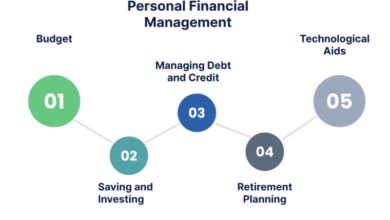How to Manage Cash Flow Effectively: Winning Strategies for Businesses

One of the most important constituents of running a company is managing cash flow efficiently and effectively. Cash flow management is an essential aspect of a business and gets even more important in attending to the business during the recession as it helps in harversting growth opportunities and managing long term stability of the company. With the right strategies in place, businesses can optimize cash flow and avert shortfalls, increasing profitability in the process. In this piece, we will cover advanced strategies to manage cash flows, explain using financial tools, and provide actionable insights to bolster the cash flow of the business.
What Is Cash Flow Management?:
Cash Flow Management refers to the practices involved in streamlining the processes related with the inflow and outflow of cash into a business. Cash Flow Management requires a business organization to have controlled outflow of money within a stipulated time” or a company managing its expenses. A fundamental component is keeping receivables closely managed so that the money coming in is always to be more than what is going out.
Cash flow has several key constituents including:
- Cash Inflows: The Funds which are coming into a specified company like revenue from sales, returns on investments, funds collected through the loans etc.
- Cash Outflows: Represents the expenditures incurred by a specified company which includes operating expenses of the accounts, interest payments on debt, and so forth.
- Net Cash flow: Cash Inflows – Cash outflows and is one of the most clear metrics for the business.
Why Is Managing Cash Flows So Important?
1. Ensures Business Continuity
Sustaining a healthy cash flow enables a company to sustain its operations and cover every operational expense which includes paying salaries, rent, invoices, and buying inventory. Struggling with cash flow sufficiency may put a company in a position of being unable to meet these obligations, resulting in potential operational disruptions.
2. Growth or Expansion
Companies that can manage their cash flow are in a better position to spend on new projects, expand their operations, and grow their business.
3. Financial Crisis Prevention
Projections done without regard to cash flow scheduling are bound to lead to unexpected cash shortages, which puts a company at risk of running into solvency issues. Well-planned cash flow management results in preparedness for both expected and unforeseen circumstances.
Key Strategies to Manage Cash Flow
1. Effective Cash Flow Projections
One of the most effective methods of projecting future cash inflows and outflows tend to involve the use of previous data trends that could help adequately make model forecasts. Businesses often face liquidity problems however predicting it through the use of historical data provides companies with relief.
Methods of augmenting flows
Trend Analysis: Easiest and effective technique allows businesses to identify past seasonal data trends and make reliable predictions.
Regression Analysis: Cash flows can be predicted using scatter diagrams, considering various factors (advertised spending sales, seasonal demand, and the condition of the market).
-
Example: A retail company uses multiple regression analysis with the formula:
y=β0+β1x1+β2x2+⋯+ϵ
where y represents predicted sales, x1,x2 are predictor variables, and β are coefficients. This method helps improve forecasting accuracy by 15%, reducing inventory issues and streamlining cash flow.
-
Scenario Planning: This involves creating multiple financial scenarios (best-case, worst-case, and most likely) to help businesses prepare for different market conditions.
2. Receivables and Payables Accounts Optimization
Adapting incoming and outgoing payments can improve the overall cash flow of a shifty business greatly.
Accounts Receivable Optimization:
Send Invoices Promptly: Timely payment owing is ensured through prompt invoicing.
Encourage customers to pay before the due date by granting them a small discount.
Implement Credit Policies: Establish policies regarding extensions of credit to minimize the risk of payment delays and defaults.
Accounts Payable Management:
Negotiate Payment Terms: Maintain amicable relationships with suppliers while negotiating longer payment periods so the organization can retain cash for a longer period.
Prioritize Payments: Focus on critical business activities while slowing down other non-critical activities as much as possible.
Example: A small manufacturing business enhanced its cash flow by negotiating 30-day payment terms with key suppliers and offering customers a 2% discount for payment within 10 days. This new practice increased their cash flow efficiency by 20%.
3. Use Technology for Automation
Using technology to automate managing cash flow saves time, increases accuracy, and provides immediate information.
Technological Solutions for Cash Flow Automation:
Accounting Software: Systems such as QuickBooks and Xero allow for the automation of invoicing, payments, and financial reporting.
Cash Flow Management Tools: Users can access their cash position in real-time and create accurate cash flow forecasts with Float and Pulse.
Cloud-Based Solutions: Making financial data accessible from any location enables organizations to make effective decisions in any location.
Example: A service-based business controlling its cash flow using cloud-based accounting software reduced its administrative costs by 25%.
4. Maintain Sufficient Cash Reserves
Cash reserves are important in dealing with unanticipated expenses or emergencies. This buffer ensures business breaks with confidence, particularly during economic downturns.
Methods for Increasing Your Cash Reserves include:
Allocate Part of Profits: Set aside a fixed percentage of profits to a cash reserve fund.
Reduce Discretionary Spending: Increase savings by cutting back on discretionary expenses.
Expand Earning Opportunities: There is less risk of income becoming erratic when one diversifies from depending on a sole source of income.
Illustration: A technology startup was able to build a reserve fund that would cover three months of operating expenditures. This was to help ensure seasonal fluctuations and delays in customer payments would not endanger the continuity of operations.
5. Manage International Cash Flow Exposure through Currency Hedging
For businesses that operate internationally, the volatility of foreign currency can restrict international cash flow. This risk can be controlled with the use of currency hedging.
Types of Currency Hedging Instruments include:
Forward Contracts: Contracts which stipulate when payment is to be made necessitate an agreement on exchange rates.
Options Contracts: Give an opportunity to sell and buy currencies a defined rate at or before a predefined date with no obligation to execute.
Currency Swaps: Transactions that include the segmentation of cash flows in one currency into another currency and are usually used in long-term cash flow financing.
Example: A retailer with foreign operations utilizes a euro forward contract in the hedge market to stabilize euro exchange rate fluctuations and protect cross-border sale profits.
Key Financial Ratios to Enhance Cash Inflows
In addition to managing cash flow, businesses can further evaluate cash flow using financial ratios:
Current Ratio: Indicates the capacity of a business to service short-term debt obligations. A ratio of 2:1 is often regarded as favorable.
Quick Ratio: Current assets, such as inventory, are removed from the calculation, providing a tighter definition of liquidity.
Cash Conversion Cycle: This ratio indicates how long a business takes to transform its investment in inventory, stock, and receivables into cash. Shorter cycles are more favorable.
Cybersecurity in Cash Flow Administration
Digitization brings new convenience, but also makes financial information more susceptible to cyber-attacks. Protection measures are essential to guarantee efficient cash flow.
Cybersecurity Recommendations:
Encrypt Financial Data: The encryption of financial transactions and critical information needs to be employed.
Security Audits: Periodic audits, penetration tests, and other vulnerability tests should be conducted.
Incident Response Strategy: Data breach and other cyber-attack scenarios should have an action plan developed.
Example: A healthcare provider using encrypted payment gateways and multi-factor authentication has successfully reduced risks of cyber fraud while preserving cash flow, even during periods of heightened online threats.
Conclusion
Optimized cash flow management serves to be a key driver for business growth and sustainability. With the use of sophisticated forecasting methods, managing receivables and payables, employing relevant, technology while mitigating risks associated with cyber attacks or currency value changes, businesses can achieve steady cash flow. Regular monitoring of financial ratios will allow managers to modify their strategies to meet market demands, leading to optimized cash flow management so businesses can thrive in a volatile economy.
Here are the top 5 FAQs related to managing cash flow:
1. What is cash flow management?
Cash flow management refers to the process of tracking and optimizing the inflow and outflow of cash within a business. Effective management ensures that a business has enough liquidity to cover its expenses, pay bills on time, and invest in growth opportunities.
2. Why is cash flow management important for small businesses?
For small businesses, managing cash flow is crucial to avoid running out of funds. It ensures that the business can meet operational expenses, handle unexpected costs, and avoid debt. Poor cash flow management can lead to insolvency, even if a business is profitable on paper.
3. How can small businesses improve cash flow management?
Small businesses can improve cash flow management by:
-
Sending invoices promptly and following up on overdue payments.
-
Negotiating favorable payment terms with suppliers.
-
Reducing operational costs and unnecessary expenses.
-
Using cash flow forecasting tools to plan for future needs.
4. What are common cash flow forecasting methods?
Common cash flow forecasting methods include:
-
Trend Analysis: Analyzing historical data to identify patterns and predict future cash flow.
-
Regression Analysis: Using past data and variables to forecast future cash flows.
-
Scenario Planning: Modeling different economic conditions to anticipate their effect on cash flow.
5. How can cash flow be improved during slow seasons?
To improve cash flow during slow seasons, businesses can:
-
Diversify their revenue streams by offering new products or services.
-
Offer discounts for early payments to encourage quicker cash inflows.
-
Cut back on non-essential costs and streamline operations to conserve cash.
Related Topic: Mastering Cash Flow Management: Advanced Strategies for Financial Success in 2025





